Swiss Christmas Dictionary for Foreigners
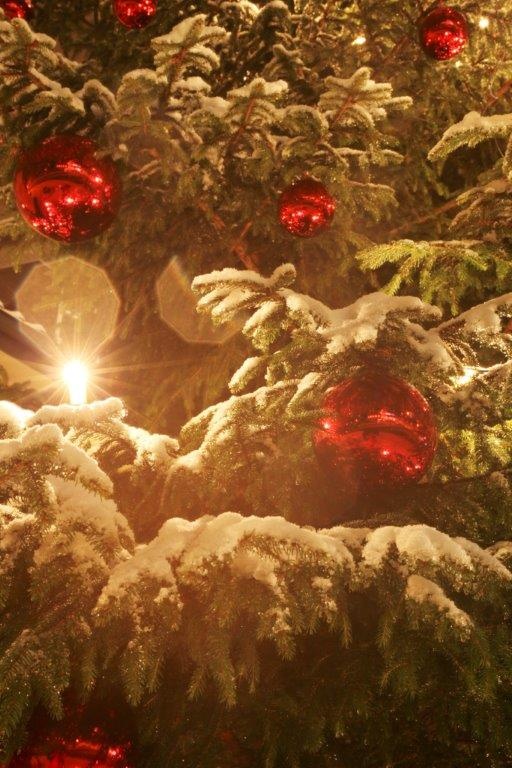
How well do you know the Swiss Christmas customs and traditions?
A
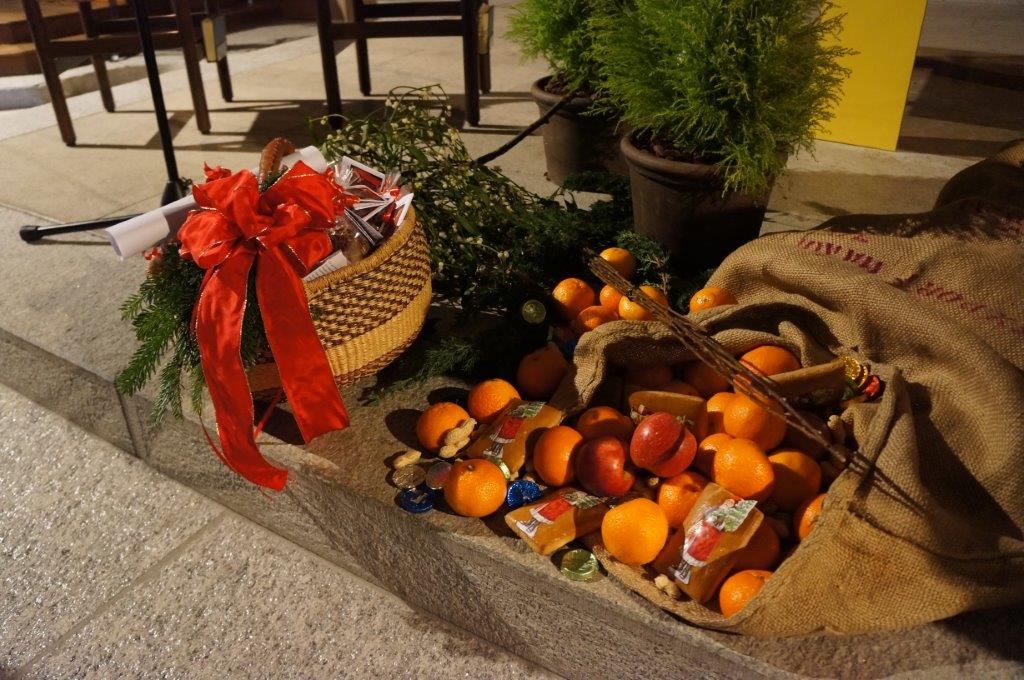
Advent means arrival. Christians celebrate the arrival of Jesus - "The light of the world". The season of advent begins four weeks before Christmas and ends on Christmas Eve, the 24th of December. What was once a time of fasting, has become a time of feasting.
Advent Kranz - Wreaths are popular and decorate the dining tables of the Swiss during the advent season. Many Swiss make their own with pine branches and candles. Instead of 23 candles as on the original wagon wheel wreath in Hamburg in the 1800’s, we have reduced it to four candles. Each week, namely on Sunday, we light a candle to brighten up our “Christmas expectancy. “
Advent Kalendar – Advents Calendar The countdown has begun. From December 1st until Christmas Eve, the calendar creates anticipation for Christmas. Advent calendars are available in chocolate, carton, fabric, homemade or purchased, but all have something in common: each day has a door with a number from 1-24. Behind the door lies a surprise - a chocolate, sweet, toy or another creation. It reminds me of our stockings but spread over 24 days.
Adventsmärkte - Advents Markets - There are Christmas markets almost everywhere these days; in the old town of Sargans, in Werdenberg at the lake and in almost every village. Christmas decorations, sausages, raclette, gifts, mulled wine, punch, music and much more are offered and enhance the Christmas spirit, empty the pocketbook and add some more kilos to the scales. Merry Christmas.
Adventsweg - Advent Path/Parade - I compare it to a village size advent calendar. Twenty-four houses are marked with a number between one and 24. Every house is decorated with a Christmas motive as individual and unique as the people who live there. On each Sunday evening, people are invited to meet in front of the designated house for a brief service and some hot punch to warm the soul and cold hands. It is a go at your own pace, in the dark, parade!
B
Brauchtum - Customs – are rituals that have become habits or customs (Sitten- etiquette, manners). Traditions are customs that have been passed to the next generation. The words are used interchangeably by the Swiss.
Bescherrung –The Gift Exchange under the Christmas tree is for many children the highlight of Christmas.
Basteln - Crafts - Handmade gifts for grandparents, Götti (Godfather) and Gotta (Godmother) are a must. Memo boards, painted coffee cups or photo frames are popular and demonstrate the true meaning of gift giving - the kids give something of themselves and occasionally their parent’s nerves.
Backen - Baking –Baking cookies, Grittibänz and yeast bread brings life into the kitchen and homes during advent.
C
Christkindli – Santa Claus doesn’t bring gifts down the chimney -an angel brings the gifts. The Christkindli flies in the house, decorates the Christmas tree, lights the candles on the tree, lays the gifts below and flies away. A bell rings to invite the family for their first glimpse at the decorated tree and the presents.
Chlaustag – Samichlaus Day - On the sixth of December Samichlaus leaves his home in the forest and visits the homes of the children. He brings along Schmutzli (his helper), a Chlaussack (originally a burlap stocking) filled with nuts, chocolates and mandarins and the Golden Book. The children wait with anticipation, a lot of respect and with a poem or music for their visitor, as they wait to hear what Samichlaus has to say about them.
D
Drei Königs Tag - Three King's day One thing is for sure, January 6 marks the end of the holidays in the German part of Switzerland. There are many differences of opinion about the customs relating to the holiday but for the sake of simplicity, we celebrate the three Kings (wise-men) visit to the manger where the baby Jesus lay.
Drei Königs Kuchen -Three King's cake - In in the 1950's, the Swiss baking Association developed a new cake recipe that looked like a flower: a large circular middle section and six, eight, or ten smaller balls all around. Somewhere inside, a figure of a king made of plastic is hidden. Over the years, it has become a tradition that the lucky recipient of the King, can call themselves "King" for a day and receives a gold paper crown to prove it. It's like a 'get out of jail free card’; the king is relieved from household chores or is allowed to stay up a bit longer.
E
Engel - Angel - We find angels in the Christmas carols, Christmas decorations and especially in the Christmas story. They play a starring role because they had the honor of announcing the birth of Jesus.
Essen - Food- We cannot deny it, the common denominator of the holidays is eating. On Christmas Eve many Swiss eat fondue. The current favorite is Fondue Chinoises (thin pieces of beef, veal or chicken dipped into a boiling broth) with Bourgignonne's (meat cooked in oil) the runner-up. Of course the yummy sauces accompany both. Some prefer raclette, while others enjoy a scrumptious gourmet meal.
I can’t forget the cookies, chocolates, nuts, mandarin, oranges and clementine we eat constantly during Advent. There are some vitamins in there somewhere.
F
Fest der Liebe - Celebration of Love another name for Christmas.
Festtäge - Festive season - describes the period from Christmas Eve on the 24.12 through New Year's Eve or even after Three Kings Day on the 6th of January. Many companies are closed during these two weeks.

G
Guetzli - Cookies – Zimtstern-cinnamon stars, Mailanderli – butter cookies, Vanilla Gipfeli, Florentiner and many more. I am so grateful that my mother-in-law makes about 15 varieties - and each family member has their favorite.
Grittibaenz - For me, a gingerbread man made of yeast dough makes. It is found on December 6 in many Chlaussäcken and is offered in each bakery to buy.
Glühwein - Mulled Wine - Nothing warms the body better as a hot drink. The basic recipe for mulled wine consists of red wine, sugar, cloves and cinnamon. BUT there are a multitude of variations.
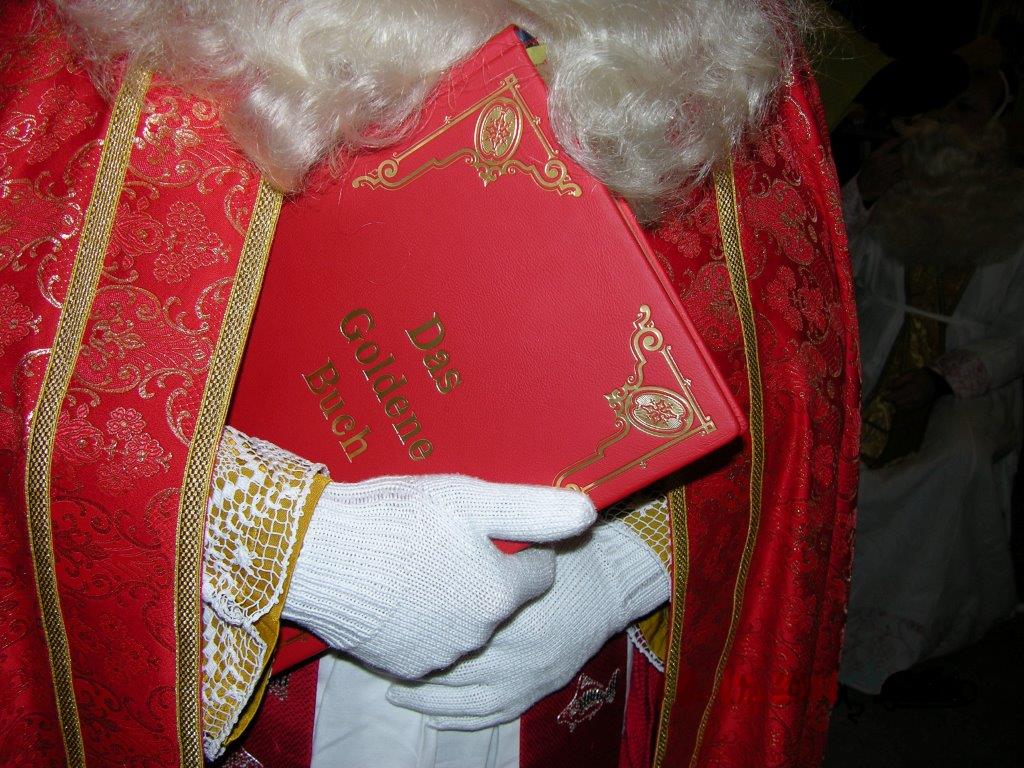
Goldene Buch – Golden Book- Samichlaus knows everything. He does accept a little help from the parents. For example he knows if little boys and girls have been good or bad. It's written in the golden book - in black on white.
H
Heiligabend - Christmas Eve – Most Swiss celebrate Christmas on Christmas Eve. But sorry my dear confederates, Christmas is on the 25.12. I love it – I get to celebrate twice.
J
Jesus - is the reason why we celebrate Christmas. Jesus is known as the light of the world, our hope. After all, whose birthday has been celebrated by millions in all corners of the world for over 2015 years?
K
Krippe - The manger /Nativity Scene- Even though the word translates to manger, actually Krippe refers to the entire nativity scene; Mary, Joseph the baby Jesus in the stable in Bethlehem. I have been amazed by huge wooden, intricately carved Nativity Scenes in Swiss households as well as the elegant variety made of velvet, silk with gold, glitter or gems. I have the chance not only to marvel at the scene but to yank me out of the hectic “Christmas Race” and remind me of the miracle of Christmas.
Kerzen - Candles symbolize the light of the world and bring warmth to the cold rooms. They exist everywhere; on the advent wreath, decorations and still adorn many Christmas trees. After all, they are a wish and not a must; we see that in the amount of many lights.
L
Lichter -Lights on the houses, in the homes, on the streets, on the trees, as reindeer, angels, as sleds or as Santa Claus, in white, blue, LED or not – we are all lighted up! Jesus is the Light – but I’m not quite sure this is what the bible meant. Oh well.
Lieder - Songs -Christmas is the time where everyone, talented or not, is invited to sing to the heavens.
M
Mandarin - Mandarins - you don’t just find them in the Chlaussäcke, but on the tables during the advent season.
Mailänderli - butter cookies that are cut out in all forms.
N
Nüsse – Nuts – I look forward to the peanuts that fill the Chlaussäcke, not the mess the shells leave behind.
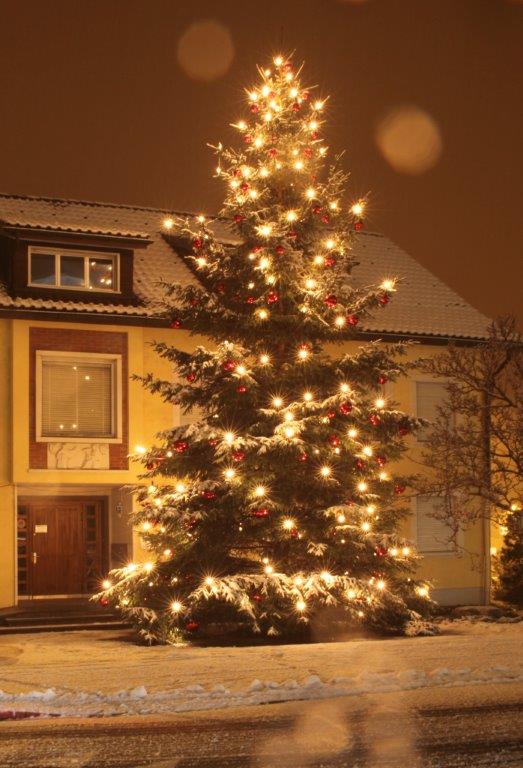
O - Oh Tannenbaum! Even we Ami’s know this one. It’s a Christmas tree!
P
Plätzchen - Cookies – another dialect.
Punch -Apple, orange or rum, it is always hot and usually with lots of sugar.
Q
R
Rüte – Switches and Ashes- what happens when you're not so sweet, Sami Claus brings along the Switch made out of a birch branch?
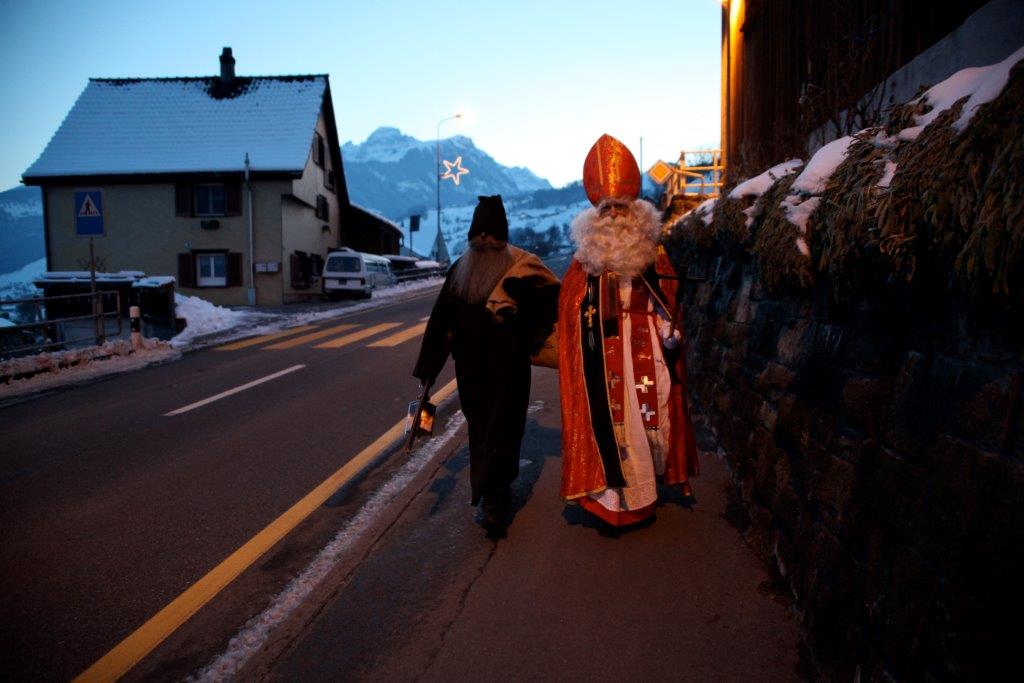
S
Samichlaus - Santa Claus - Whoever lives in the Switzerland for any length of time, soon discovers the Swiss love for abbreviating names and creating pet (kose) names. That is what happened to Saint Nicholas, the patron saint of children who loved to give them gifts. The reformed Christians did not believe in saints and abbreviated Saint to Santa. Somewhere along the line Santa was shortened to Sami, Claus, to Nikolas and Niggi (Nicki) as well. Just like in the child’s poem “Sami Niggi Näggi”. Samichlaus is more majestic than the North American version – he wears a long red velvet robe lined with gold braid, his white hair and beard long. He doesn’t come empty handed; he carries the golden book in one hand and a golden rod in the other.
Schmützli – Santa’s Helper - On December 6th, Sami Claus comes but he can’t do everything alone, he needs an assistant. He needs Schmützli. To me he looks threatening. His face, clothes and beard - everything is dark. He carries a burlap bag in one hand and switches in the other. But children should have no fear – or say the parents say! In Austria he is called Krampus.
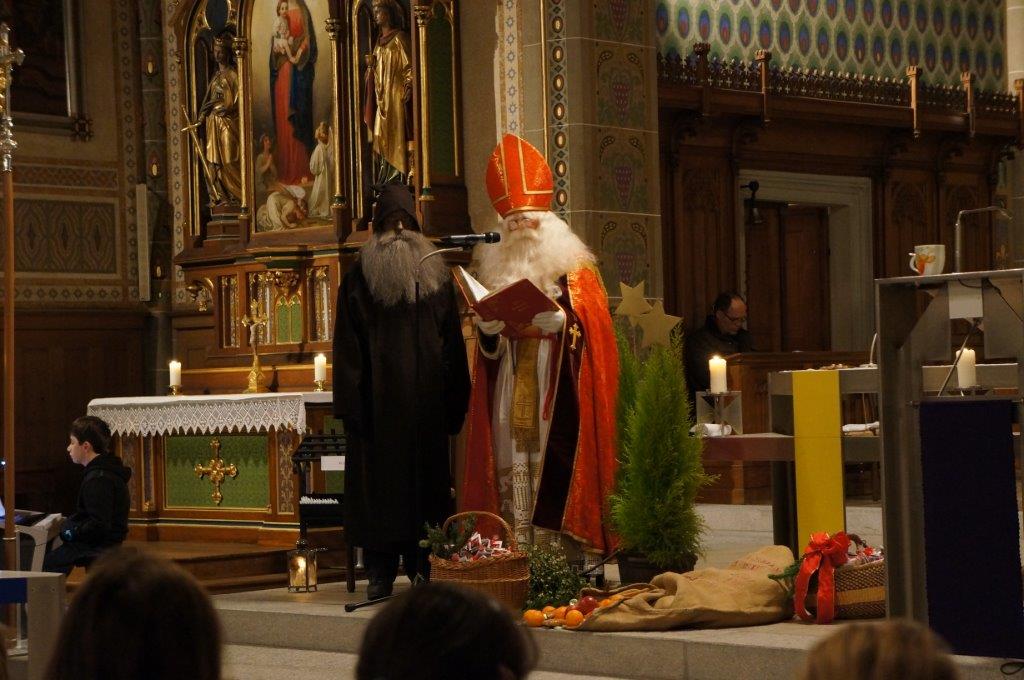
Sprüchli - Poems-The children recite a poem to Samichlaus on December 6.
Sternsingen - Caroling on Three Kings Day is a Catholic tradition. The children dress as the three kings and carol from house to house blessing each for the New Year as they go.
T
Tannenbaum –Christmas trees decorate houses, businesses, and restaurants both indoors and outdoors. A little decoration brightens the dark days of winter and the smell is gorgeous.
U
Umzug - Parade - Samichlaus parades,
V
Vanillgipfel – delicious vanilla cookies baked in the shape of a croissant and dusted with powdered sugar. Yum!
W
Wichtel – Secret name drawing is a tradition among children in schools and adults at work and in the various clubs. All names are placed in a hat and each member draws a name. During the advent season, small gifts are delivered secretly. Later, the gift giver is revealed.
X, Y
Z
Zimt– Cinnamon the Christmas spice, in cookies like the Zimtstern, or in tea, punch, mulled wine or cider.
Zucker - Sugar is everywhere – especially on the hips.